While we sleep on these warm spring nights, millions of birds are winging their way north to their summer breeding grounds.
Migratory birds start returning to Connecticut as early as February and continue into late May. Each species keeps its own internal clock of when to return. In general, birds who traveled the farthest in the fall returned later in the spring than those who wintered nearer by in the southern states.
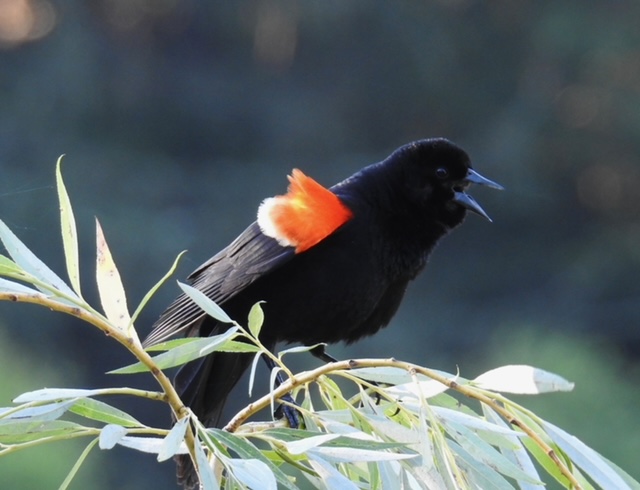
Red-winged blackbirds winter in the continental U.S. south of Connecticut. They are middle-distance migrants and one of the first songbirds to return here in February. Photo by Avery Stirratt.
Why and How Birds Migrate
The birds who migrate south in the fall do so because their food source becomes unavailable or severely limited when the ground is frozen and/or snow-covered and ponds and lakes freeze over. As insect populations are dormant in winter, the birds who are most dependent on them must head south. These include songbirds such as warblers, tanagers, and orioles who forage mainly for caterpillars in the tree tops; and those, such as swallows, swifts, and flycatchers who catch insects on the wing. Waterfowl, shorebirds, and some raptors migrate when waterways freeze, conditions become harsh and prey becomes scarce.
According to eBbird.org, over 650 bird species breed in North America. About ½ of these migrate south for the winter.
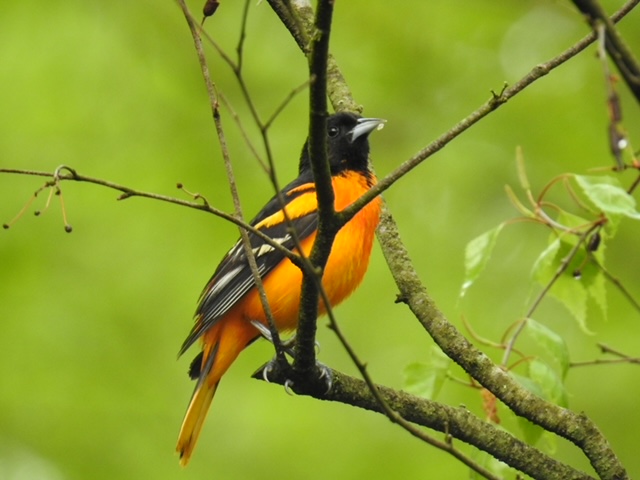
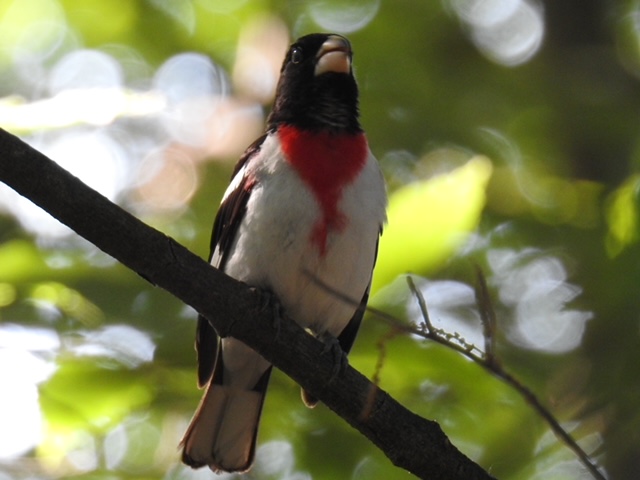
Northern orioles and rose-breasted grosbeaks migrate long-distances to winter in the Caribbean, Central, and northern South America. They return to North America in the spring to breed. Photos by Avery Stirratt.
Long-distance migratory birds winter in the tropical regions of Central and South America and the West Indies. Middle-distance migrants stay within the southern regions of the continental U.S. Some bird populations shift only slightly southward (100 miles or so). The distance they travel depends on the severity of the weather. Many ducks, geese, and swans winter along the Atlantic coast and return inland to nest. Some birds move only a short distance to lower elevations in mountainous regions.
Most songbirds and waterfowl fly at night, using the setting sun, the North Star, and the Earth’s magnetic field as guides. Raptors, such as hawks and eagles, travel daily, riding on thermal winds and using visual clues in the landscape that they remember from previous flights. Whether traveling by day or night, all migrants need to rest and refuel along the way. Stopover spots must offer enough food to meet their voracious appetites, as well as clean water and safe places to sleep.
Ducks, geese, and shorebirds tend to follow the same preferred migratory routes year in and out. They remember the best stopover spots and use the same ones when heading north or south. Songbirds use different flight patterns in spring and fall. They take advantage of strong spring tailwinds when they head north and less severe fall headwinds when they go south. Therefore, they use different stopover spots coming and going.
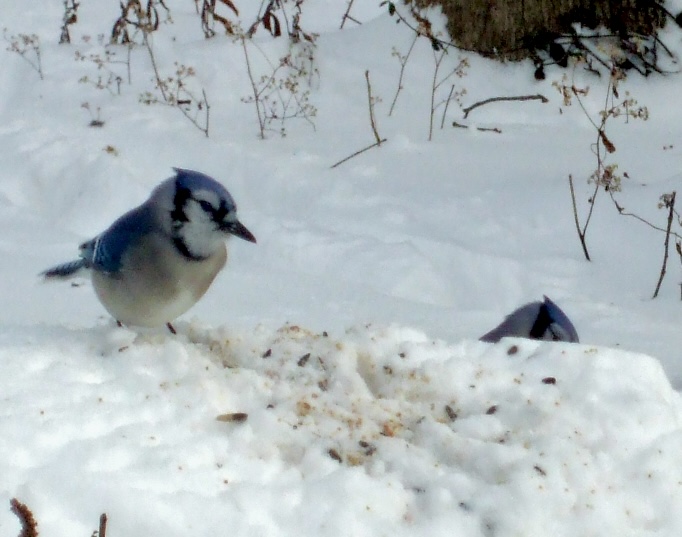
Blue jays exemplify migrants whose populations shift slightly southward in winter. While they are considered year-round residents in Connecticut, the jays seen here in winter may not be the same ones that live here in summer. Photo by Susan Bergen.
How to Help Migrating Birds
Migrating birds face any number of perils along their journeys. Their populations have plummeted drastically in recent years, due to a variety of causes such as:
- habitat destruction in both their winter and summer homes
- degraded and disappearing stopover spots
- light pollution from cities and suburbs which interferes with flight orientation
- physical barriers such as tall buildings, power lines, and wind farms
- excessive use of pesticides that kill insects (a major food source)
- extreme weather events due to changing climate
Wild natural habitats are essential to sustain migrating birds. The NCLT protects nearly 400 acres of open space on 70 parcels across town. Some of our properties are small (less than 5 acres) while a few are quite large, with Still Pond at 47 acres and Watson Symington at 46 acres. Our preserves encompass woodlands, meadows, wetlands, streams, vernal pools, and ponds, making ideal stopover spots for migrants and homes for our year-round birds. Canopy and understory trees provide food and shelter, there is abundant fresh water and our skies are dark.

Still Pond, our largest preserve, with its adjacent wetlands, meadow, and forest offers a welcome respite for birds on the wing. Photo by Susan Bergen
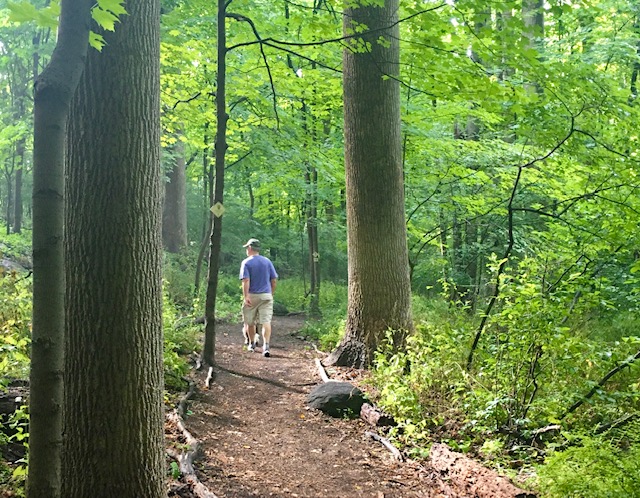
The Oenoke Lane GreenLink is a small woodland oasis just a stone’s throw from downtown. Photo by Susan Bergen.
On the home front, we can all make our own properties more bird-friendly as a stopover and destination breeding spots. Here are some suggestions:
- Create natural habitats by leaving part of your property wild
- Plant trees and shrubs that produce nuts, fruits, seeds, and berries, and native species that support insect populations (all provide food for hungry birds)
- Leave seed heads standing in gardens through fall and winter, and don’t mow meadows until early spring (more food for birds)
- Refrain or reduce the use of pesticides
- Add birdbath/s if there is no fresh water nearby
- Keep cats indoors
- Turn off outdoor spotlights which interfere with migratory birds’ sense of direction
Please help support migratory birds by donating to local conservation groups, like NCLT, as well as, regional and national outfits that protect habitats, conduct research, and track bird populations around the world.
Birding field guides include maps that outline each species’ winter, summer, breeding, and/or year-round ranges.
Recent Comments